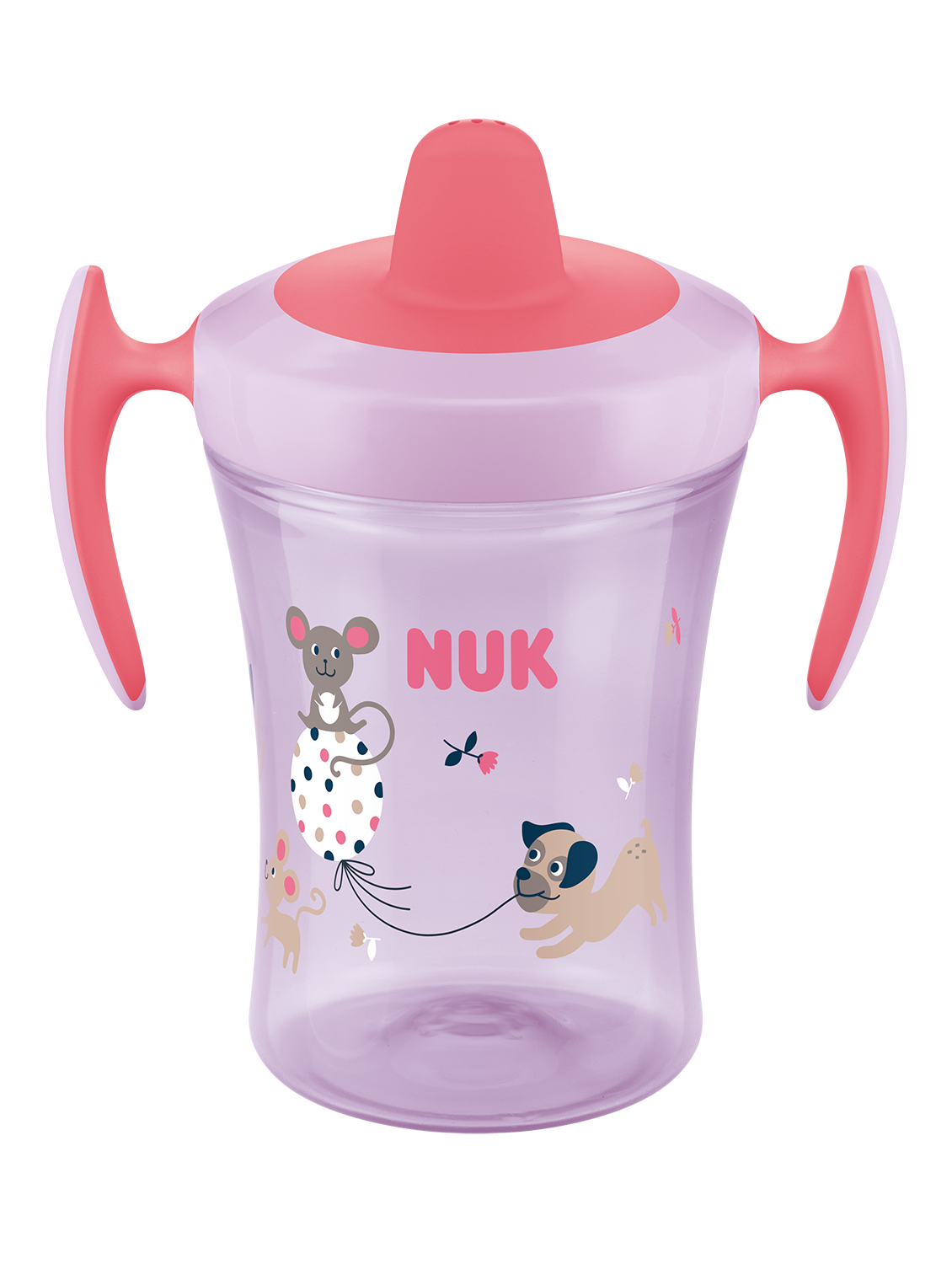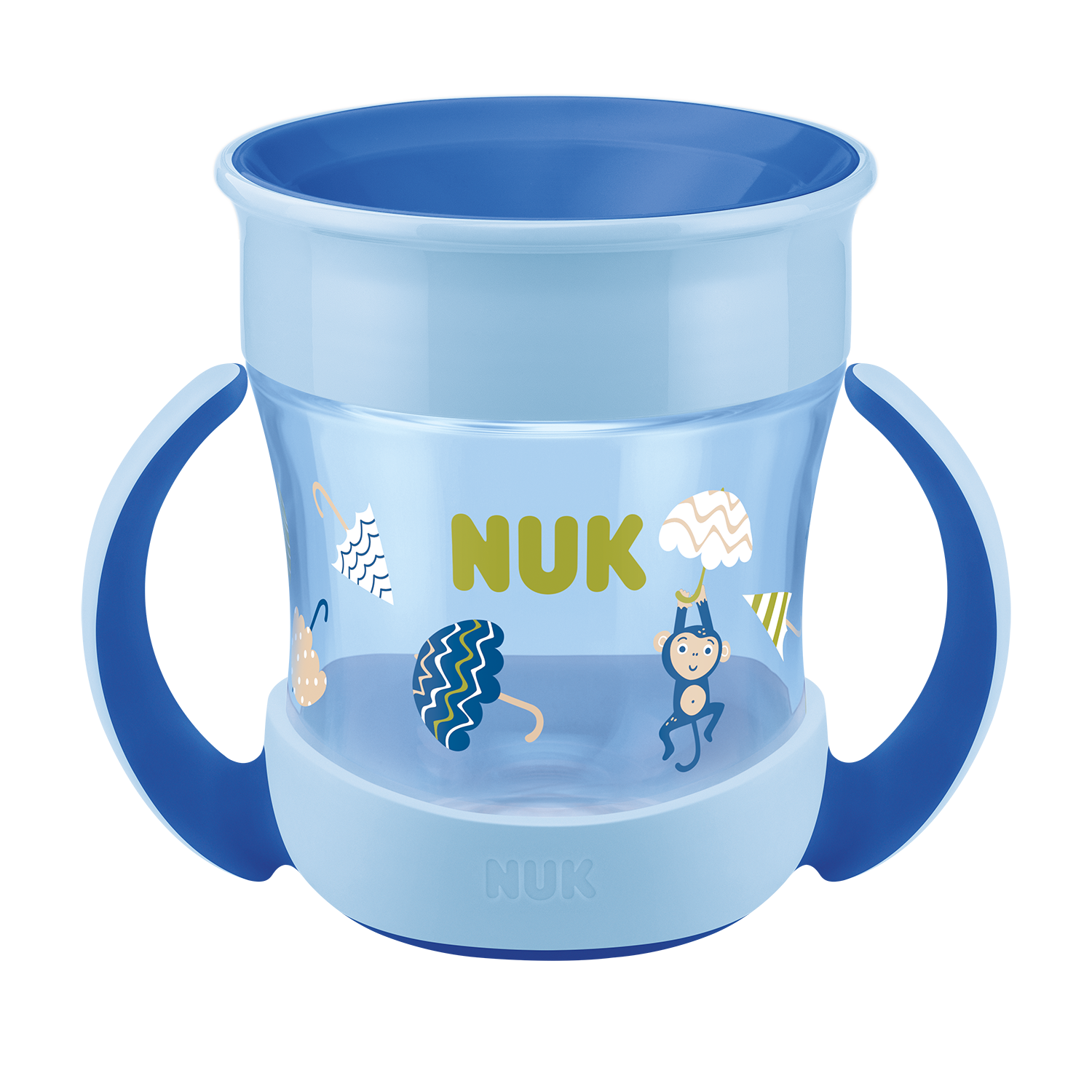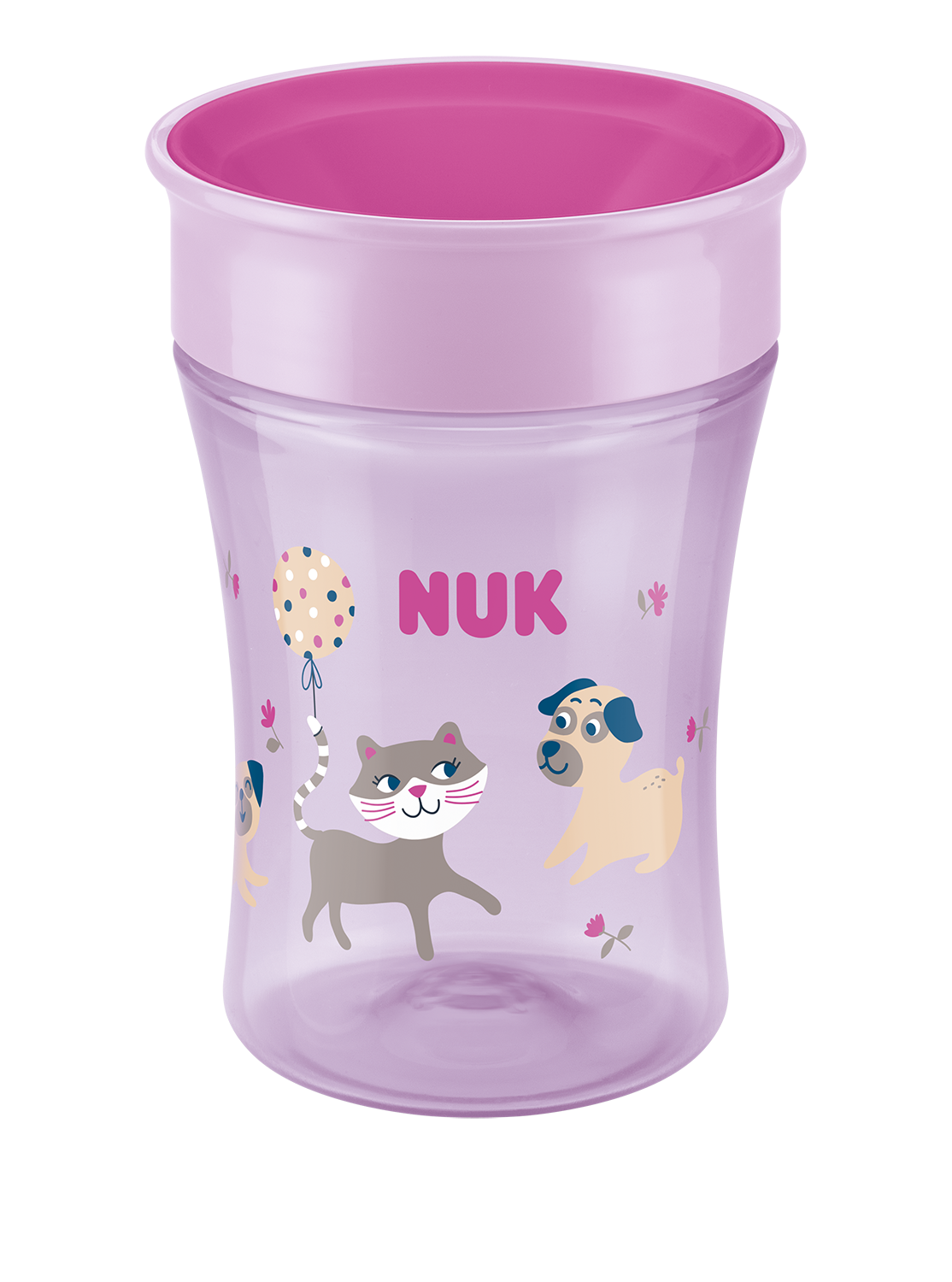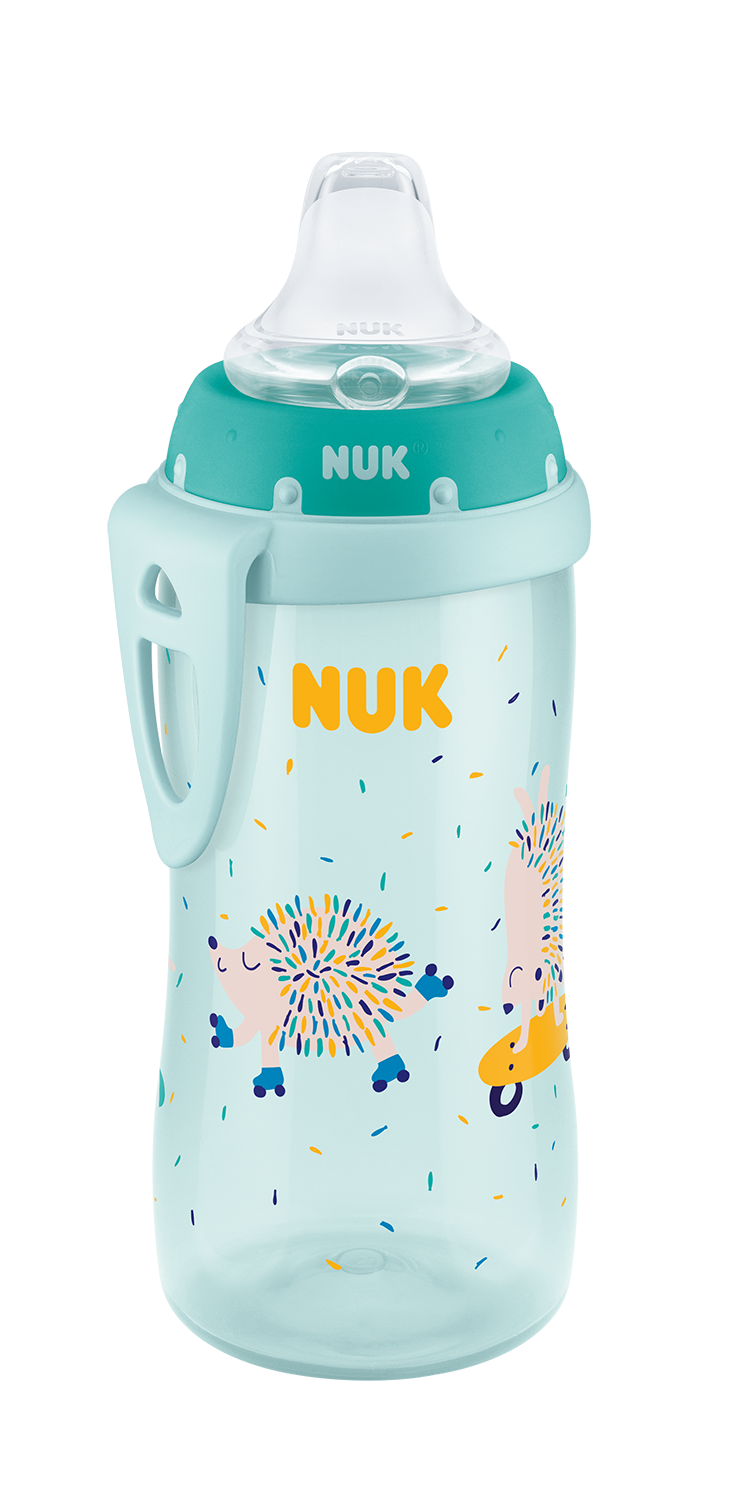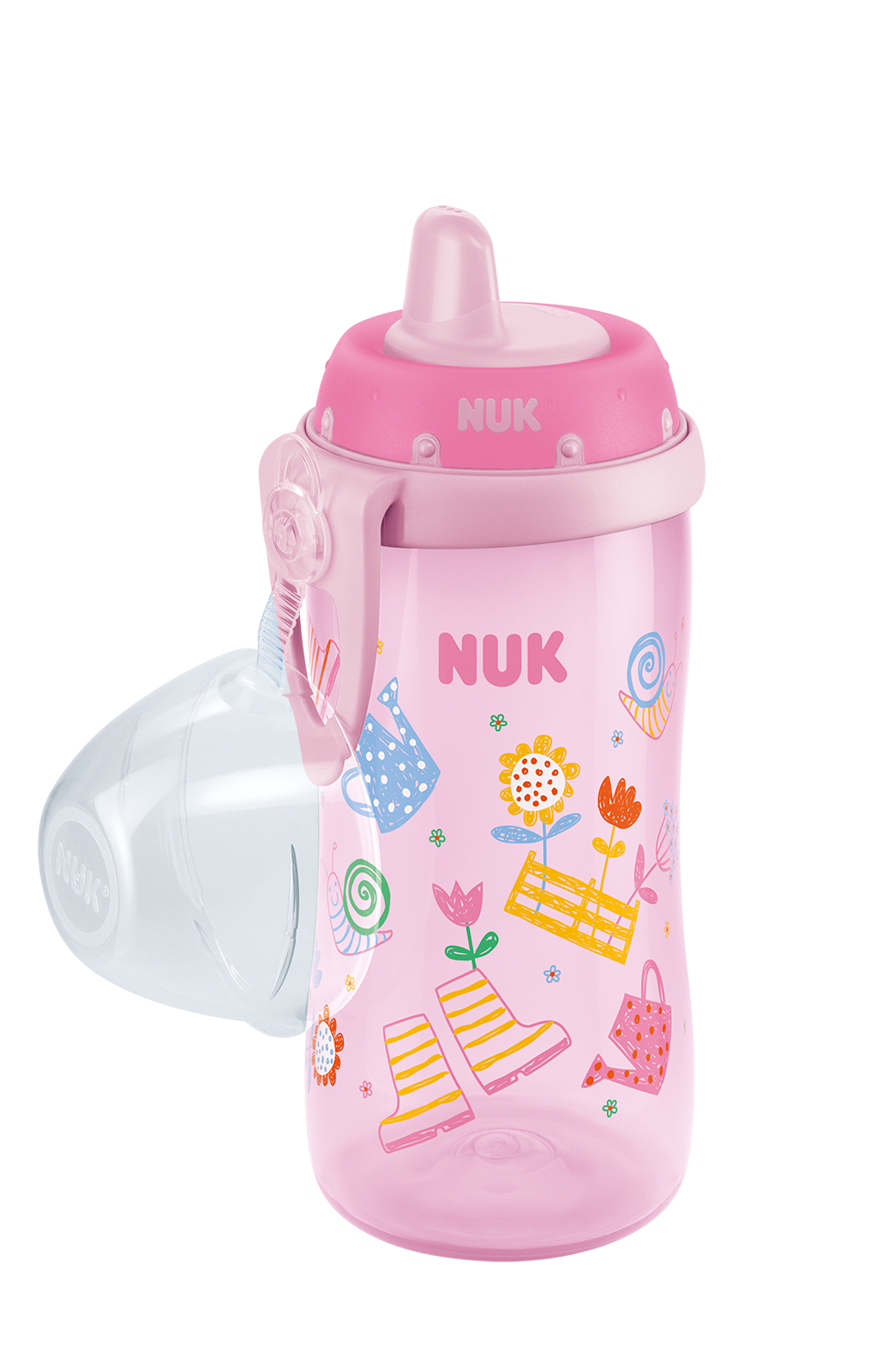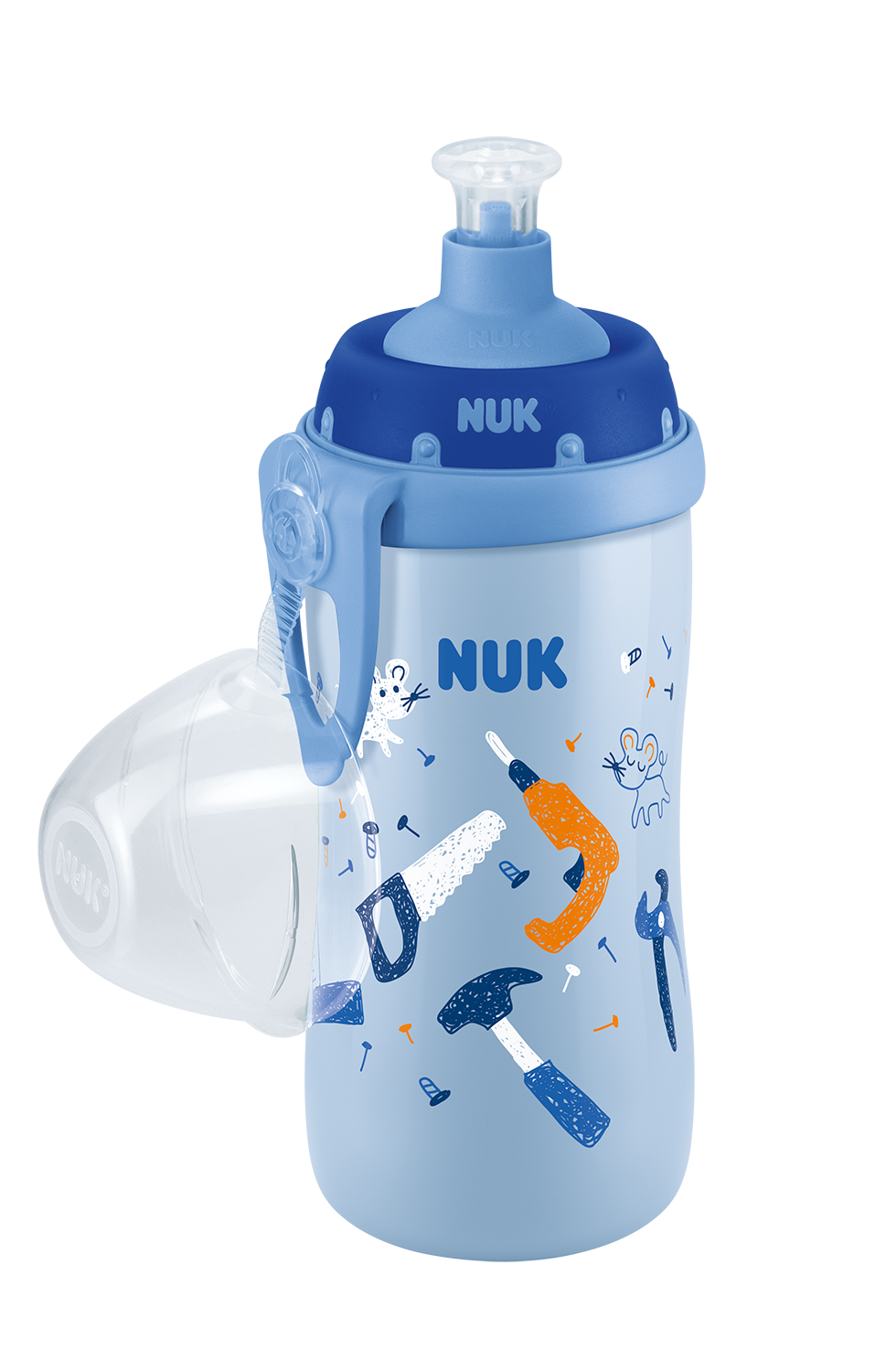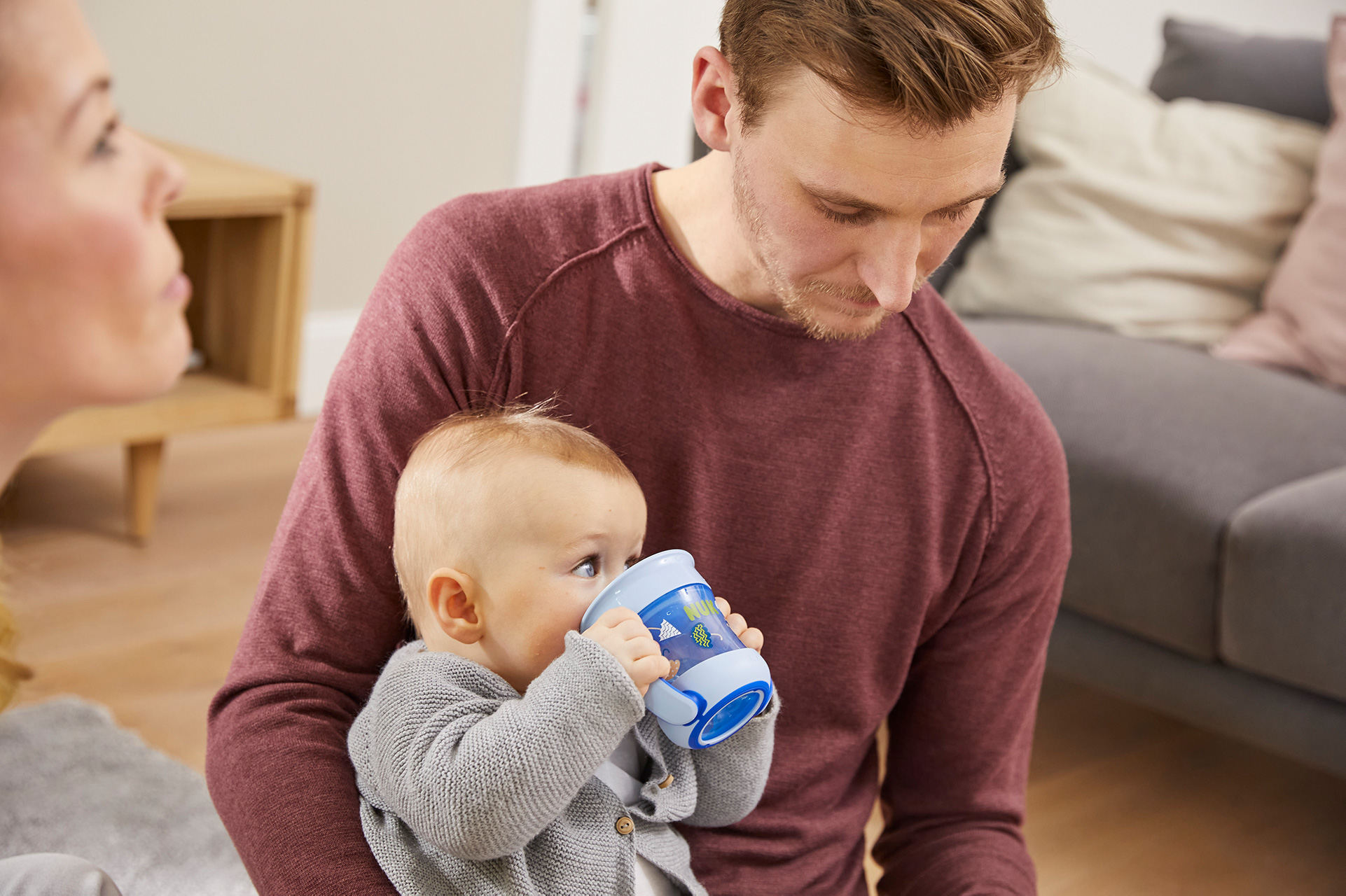
CAN YOU PRACTISE being THIRSTY?

Hardly any milestone in a baby's life is as important as learning to drink. Because without water, the human body just doesn´t work. From supplying the organs with nutrients to regulating body temperature.
And parents also have to grow into the subject:
For the answers, we, at NUK, get to the bottom of drinking. Understanding is the first step towards a smooth transition to independent drinking.

AT what Point do you needto drink more?
The third pureed meal brings the change: three purees together provide the child with about 800-900 ml of liquid. From this point on, it is advisable to give a drink with the meals to reach the recommended water intake. The more often a child takes part in family meals and the less often has meals in the form of breast milk or formula, then the more liquid should be drunk.
Source: Healthy into Life Network, an IN FORM initiative of the Federal Ministry of Food and Agriculture.
HOW MUCH is enough?
Drinking is important - of course! But how much is actually enough? Fortunately, the recommendations of the German Nutrition Society are actually quite simple.
| Age | Wasserzufuhr durch | Totalwater intake | |
|---|---|---|---|
| Drinks ml/day | Food ml/day | ml/day | |
| Babies | - | - | - |
| 0 to under 4 months | 680 ml | - | 680 ml |
| 4 to under 12 months | 400 ml | 600 ml | 1000 ml |
| Source: German Nutrition Society | |||
WHAT are you
ALLOWED TO DRINK?
- Was dürfen Kinder trinken?
- Was ist mit Fruchtsäften? Obst ist doch gesund …?
- Was machen zuckerhaltige Getränke im Mundraum?
- Was ist Flaschenkaries?
- Gibt es etwas, was ich beim Trinkaufsatz beachten sollte?
- Welcher Trinkaufsatz ist in Ihren Augen besonders empfehlenswert?
To protect a baby's milk teeth, only water or fruit and herbal teas should be given. Even fruit juices and spritzers are not suitable for little ones, because the fructose and acids they contain attack the teeth and make it easy for cavity-causing bacteria to form.
Even water can be harmful to the teeth if drinking cups with spouts or teats are used as "permanent teats". The constant dilution of saliva then means that it can no longer ensure a balanced acid level in the mouth. The result is known as "baby bottle caries". That is why it´s good if the little ones learn to drink from cups as early as possible.
Soft drinks are generally not advisable. They provide a great amount of quick energy due to their high sugar content. However, their vitamin and mineral content is very limited. Juices are a different matter. They contain a lot of good things for the body. However, due to their high sugar content, they are not recommended for quenching thirst either. In fact, many paediatric dentists now recommend that juices and juice spritzers only be served to children when there is something special to celebrate. Quasi "champagne" for youngsters.
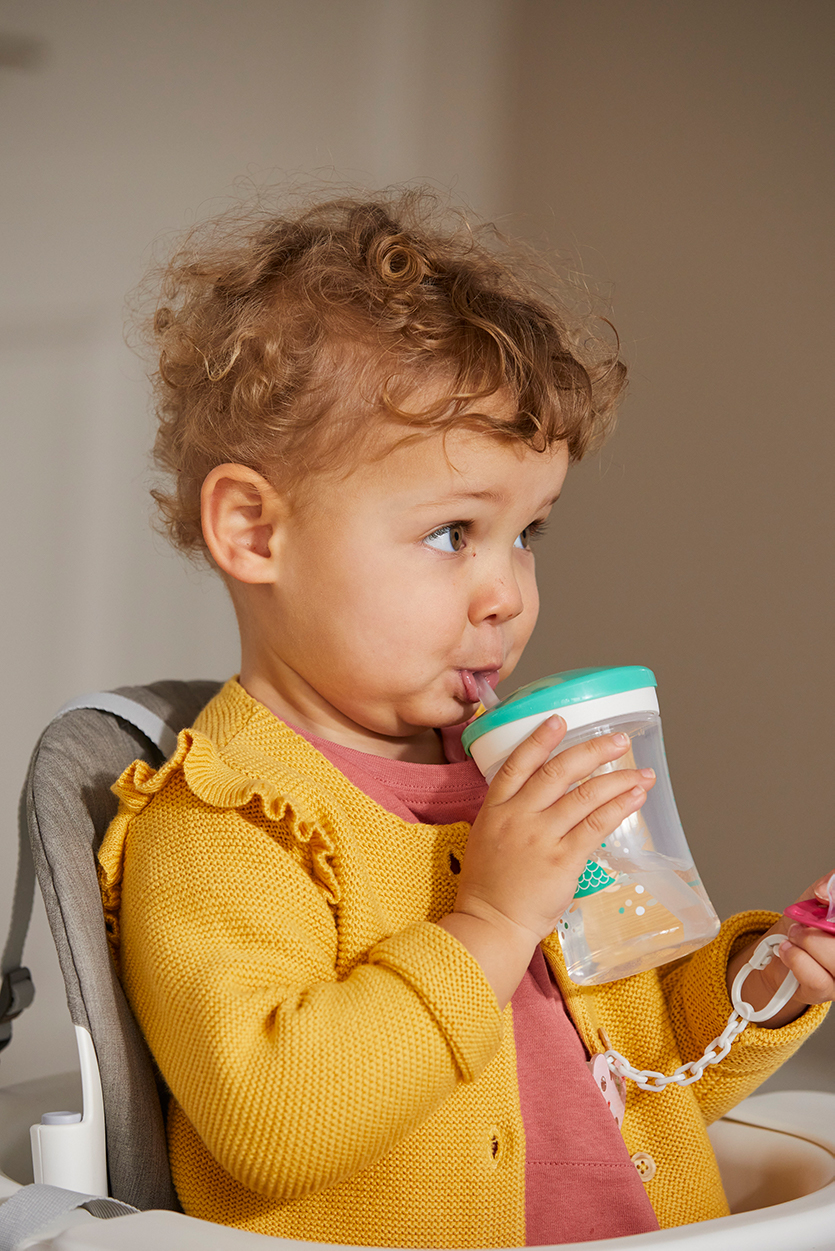
HOW do you learn,
to drink independently?

Drinking brings its own challenges to each stage of a child's development. First, the transition from bottle to cup must be successful. Later on, the cup has to join in with everything and withstand a lot too. When children are older, they want a cup that suits them and their new abilities - not just "one for babies".
We, at NUK, have followed this concept exactly with our learner bottles, the NUK Evolution Cups and the NUK First Choice Cups: “growing” with the child to offer them exactly what they need and want.
How DO I PERSUADE
you to drink?
Being able to drink is one thing - wanting to drink is another ...
Many parents despair when trying to get their offspring to drink regularly.
These two tips can help.
Tip 1: BE A ROLE MODEL
Children are always keen to imitate their parents. The best way for parents to motivate their children to drink is to drink more themselves! A welcome side effect: the grown-ups feel better, too.
Tip 2: DRINKING CAN BE FUN
Water is boring? Not if it comes out of a cup that is great fun. The new NUK cups with the chameleon effect will delight children because the motif on the cup can be changed when it is warmed or cooled. Hard to believe! The little ones won't want to let one of these out of their hands.
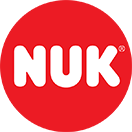
 First Choice Learner bottle
First Choice Learner bottle